While Vietnam isn't currently world-renowned for its cacao— though it's getting there— the country's locally-made chocolate has been growing in popularity over the last decade. Despite not being on anyone's radar 10 years ago, Vietnam is now one of the hottest cacao origins in the world. Yet the story of chocolate in Vietnam goes back over a century, waylaid by faraway competitors, civil war, and the fall of a regime. An unlikely source has brought it back onto the global stage, but that still may prove insufficient to breathe enough life into local chocolate.
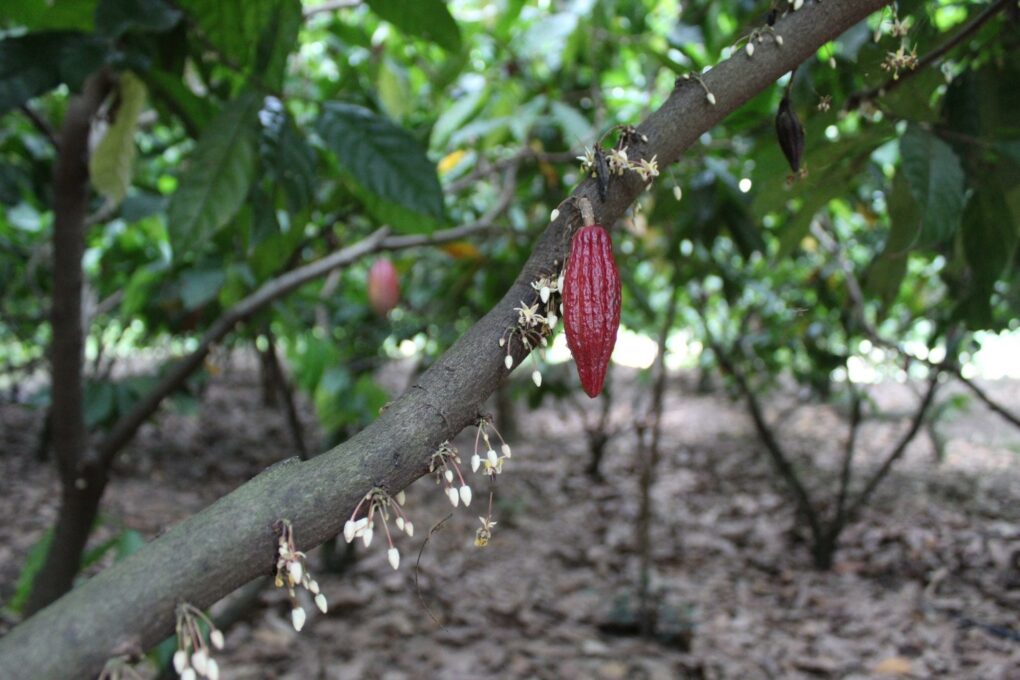
Jump To
History of Cacao in Vietnam
While Vietnam's baguette-based bánh mì may be more well-known than their history as a French colony, a century of influence can't be erased so cleanly. The French brought cacao to Vietnam shortly after they established it as part of their colony of French Indochina (which also included modern-day Laos, Cambodia, and parts of southern China). As the European colonialists were wont to do, they attempted to create for themselves a source of cacao in Asia, as the Spaniards has already done in the Philippines.
This was all at the same time as the British were establishing cacao in their African colonies, in the same region which is currently producing over two-thirds of the world's cacao supply. According to Samuel Maruta, founder of Marou Chocolate in Ho Chi Minh City, Vietnam, the first recorded cultivation of Vietnamese cacao was in the 1870’s. That particular plantation was cared for by a Catholic priest, Father Gernot, in the southern province of Ben Tre. A decree dated 1907 declared that the French should stop subsidizing Indochinese cacao because “it was deemed to be a failure,” says Sam.
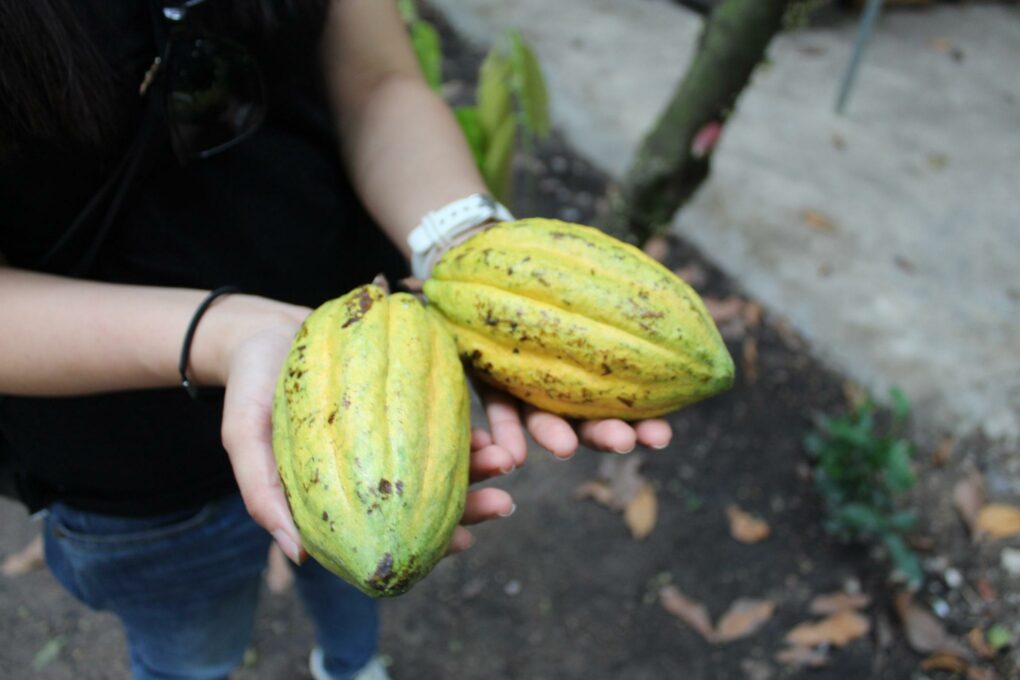
While very minute quantities of cacao were exported from modern Vietnam in the 1920’s and 1930’s, these amounted to less than one metric ton of annual output. Cacao was never purposefully phased out, so some Vietnamese farmers continued to keep trees on their land. What they did or didn't do with the fruits we'll never know. But following the Vietnamese Civil War, almost all of those small earlier plantations were either destroyed or abandoned, especially in the southernmost regions.
After the War and before the fall of the Soviet Union, the beginnings of a farmer exchange program with Cuban agronomists was arranged. But the program quickly died out once funding stopped. So many times, various foreign entities tried to bring cacao to Vietnam, and repeatedly they gave up. The biggest factor in the current revival of Vietnamese cacao has actually been the involvement of three key entities. Those are: Vietnamese agronomists & farmers, the Vietnamese government, and large Western chocolate manufacturers looking to invest in cacao in Southeast Asia. They seemed to find what they were looking for in Vietnam.
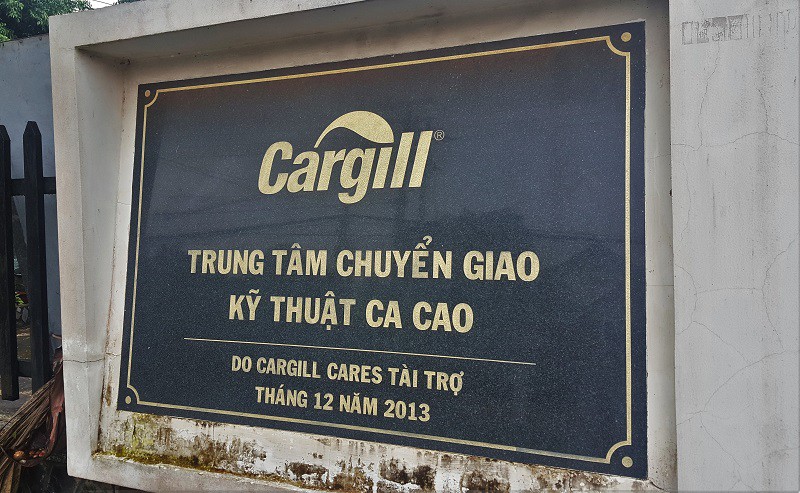
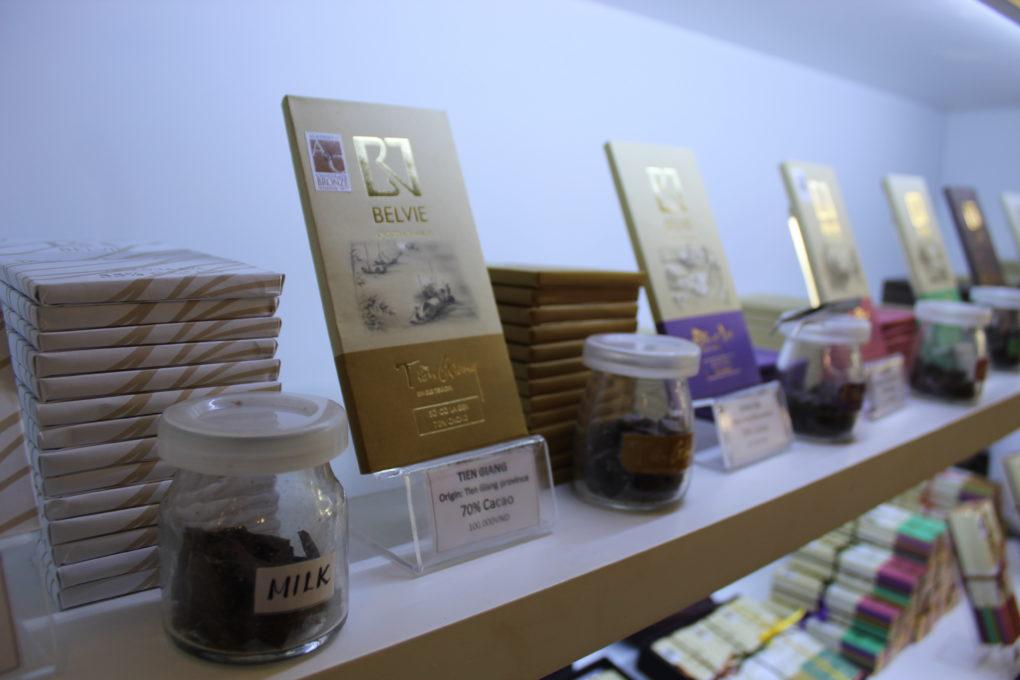
Reviving Vietnamese Cacao
The recent revival of Vietnamese cacao began in the year 2000, when a researcher from Nong Lam Agricultural University in Ho Chi Minh City began a local farming project. The researcher, Dr. Pham Hong Duc Phuoc, had begun his inquiries some years earlier, experimenting with hundreds of trees to find the perfect cacao varietals for Vietnam. Once he'd settled upon 4 types, he enlisted the help of 12 local farmers in the southern province of Bà Rịa.
Dr. Phuoc gifted these farmers 1,000 baby cacao trees each, and supported their growth with workshops on how to care for the trees and process the fruits into commodity-grade cacao. Those grafted seedlings grew well, and soon more & more Vietnamese farmers were growing cacao. The 4 chosen types were the tastiest, easiest to manage, and most pest-resistant of all those imported from Malaysia. Larger amounts of cacao farming spread to seven Vietnamese provinces: Đắk Nông, Lâm Đồng, Đắk Lắk, Đồng Nai, Bà Rịa, Tiền Giang, and Bến Tre.
But this growth hit a peak around 2008-2009, when the global economic crisis caused lower prices. Farmers started getting rid of their trees, and many never went back to cocoa. Commodity prices for a crop like cocoa, which is generally purchased at world market price, just weren't high enough to warrant all the work of its processing. Not to mention that cacao farmers need to be trained to properly process their cacao before it could be sold, another expense they couldn't afford.

The success of the University's program were already on a downturn when two Frenchmen entered the scene in 2011. Deciding to go into the chocolate business together, Samuel Maruta and Vincent Mourou founded Marou Chocolate that very year. The co-owners of the Saigon-based company found cacao growing in southern Vietnam, and began experimenting with it from Samuel's home. Marou’s findings, it turned out, were actually a direct product of the cacao planted in partnership with Cargill & Mars in the early 2000’s.
Vietnam's cacao industry has never really recovered from the dip in production, and it's with good reason. While some cacao farmers have been able to access the premium cacao market and work with local chocolate makers to exchange higher price for higher quality, most haven't. Cacao needs much more input and effort than comparable local cash crops, like pomelo, rubber trees, and durian, so it needs comparable income to keep farmers interested. It takes years before it bears fruit, making it even harder for farmers to recoup their heavy inputs immediately.
Had Marou not become involved when it did, the decline in Vietnam's cacao production would almost certainly have been much steeper. With the average annual income in Vietnam at less than $1800USD, and even lower earnings in rural farming areas, even a small increase in income can make a huge difference. On the other hand, a bad year for crops can have a devastating effect, resulting in rash decisions— like cutting down all of your cacao trees.
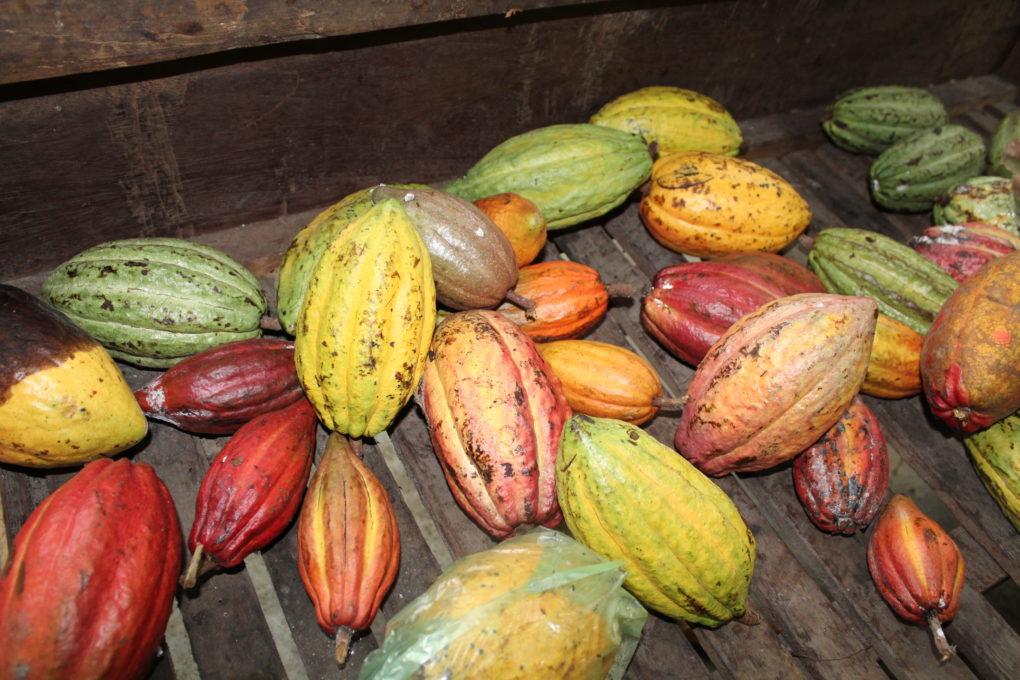
Turning Waste Into Wine
Of all the cacao-growing countries I've visited, Vietnam seems to have the strongest obsession with cacao wine. Unlike in many countries, where the focus is upon local chocolate making, Vietnamese farmers are much more interested in what they can do with the rest of the fruits. Since Vietnamese desserts are mostly rice- and fruit-based, even current local consumption of chocolate is minimal.
For Vietnamese farmers, the comparable local product is liquor. Cacao liquor, also known as cacao wine, is an alcohol made from the fermented juice of the cacao fruits. While some of that juice is needed to properly ferment the beans, there is generally excess, which is often turned into a slightly fizzy alcoholic beverage enjoyed by the farming communities. Most of the cacao in Vietnam grows in just two areas, in Dak Lak and Tien Giang, so there's more possibility for farmers to bring together their excess juice and make something delicious.
While there's nowhere near enough cacao wine produced to turn it into a large-scale commercial product, it is worth noting its popularity on & off the farms. Last year Marou even had a cacao wine competition amongst farmers from all 7 of the provinces they worked with, everyone sampling each other's creations. Note that a few brands of cacao wine are actually sold exclusively in Vietnam, but it's a very niche item and much too expensive for regular local purchase.
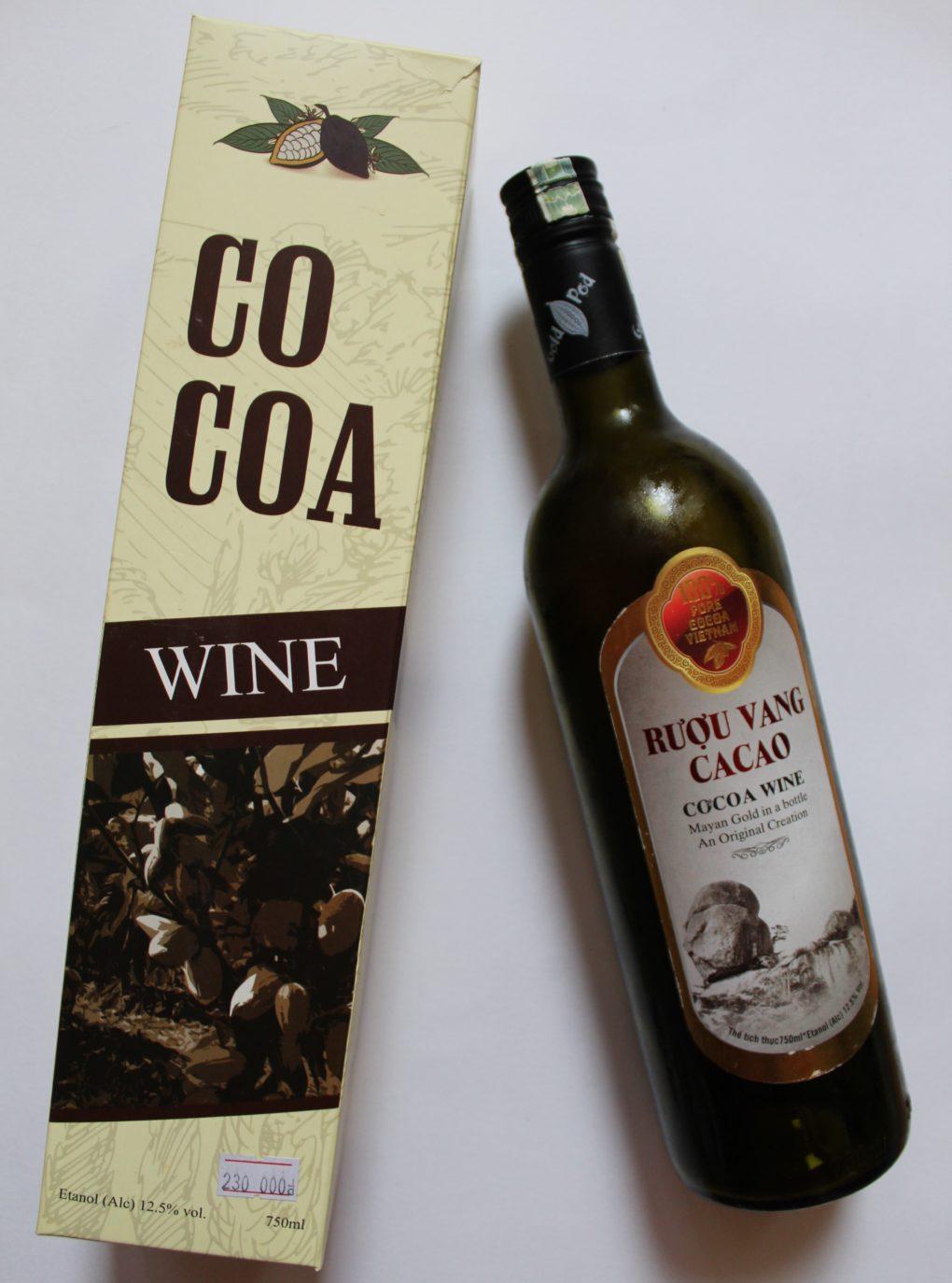
Making Chocolate In Vietnam
The modern Vietnamese chocolate making movement, inspired in no small part by Marou, came into full swing in 2018. As Samuel Maruta said in our interview, “we’ve come a long way from making chocolate in my kitchen.”
As of publication, there are over a dozen small-scale bean to bar chocolate makers in Vietnam. Though most of them are based around the country's largest tourist destinations— namely Saigon, Hanoi, Da Nang, and Nha Trang— increasingly there are cacao farmers getting into the chocolate making game.
One such farmer is Van Thanh Trinh, one of the original cacao farmers in Dr. Phuoc's experiment, as well as chairman of the recently-opened Binon Cacao Park. In addition to processing and selling local cacao, his company also makes value-added cacao products such as chocolate and cacao wine. "Many cacao farmers don't know that the chocolate is made from cacao beans," Mr. Trinh told me via interpreter. "They grow, they sell to [me], but they don't know."
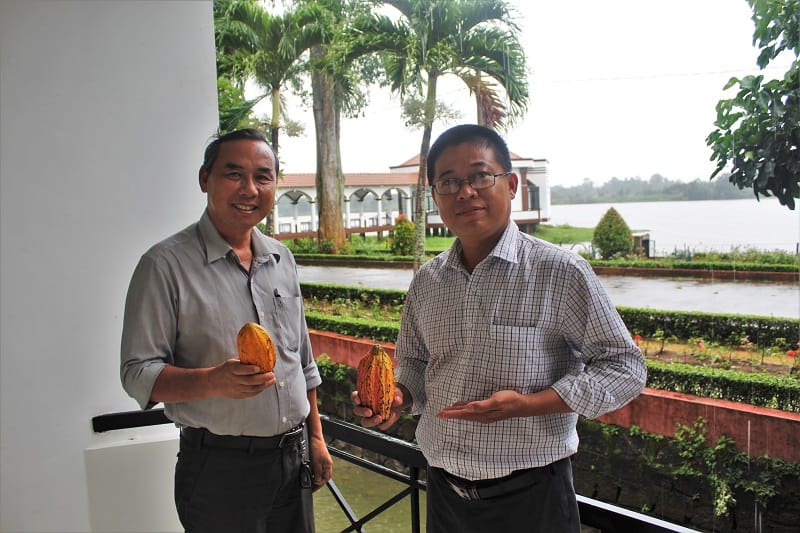
Right now, Vietnam is only producing between two and three thousand tons of cacao per year, minuscule compared to other producing countries. So while the number of chocolate makers in Vietnam is on the rise, the amount of quality cacao remains at a standstill, vulnerable to the whims of the weather. In the past few years, both draught and severe flooding have been issues.
Some other challenges that come along with making chocolate in Vietnam include sourcing & importing equipment, finding locally-produced packaging, dealing with constant humidity, and finding reliable methods to transport beans. All of this is before you even reach the local and international markets to sell your products. Don't even get a chocolate maker started on the pain of trying to export chocolate to a new country.
Even though the number of Vietnamese chocolate makers is on the rise, it means nothing if there's nobody to buy their bars.
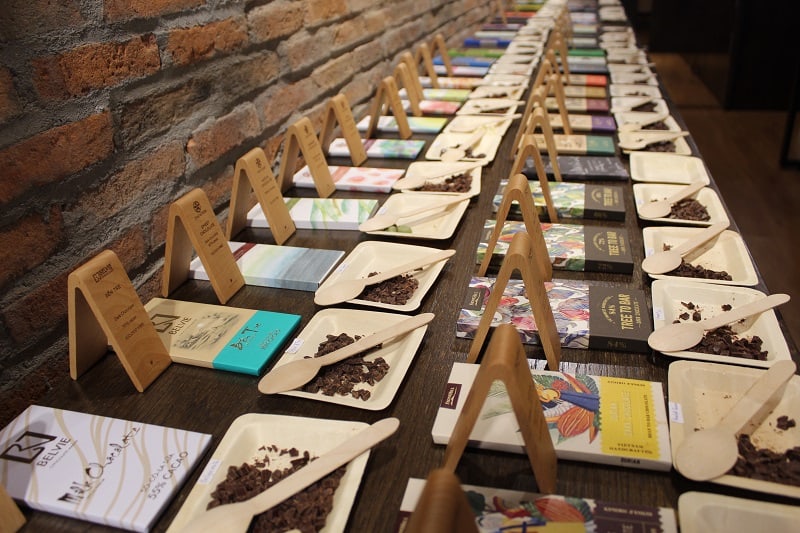
Chocolate Consumption in Vietnam
As with nearby Taiwan and Thailand, Vietnam has little to no history of cacao consumption and processing. Up until 8 years ago, almost all Vietnamese cacao was exported for further processing by international chocolate manufacturers. So while chocolate consumption in Vietnam has certainly grown over the last several years, in general, it's still not very high.
In the more wealthy northern areas of the city, people want to eat healthier, and they don't see chocolate as a big part of that goal. Down south they eat cacao, but prefer much sweeter versions of the product, lessening the positive impact upon farmers. For example, as popular as coffee is in Vietnam right now, it too was also once new.
The country's famous milk coffee wasn't even possible on a wide scale up until a few decades ago, as there was almost no milk in Vietnam. Northern Vietnam’s egg coffee was actually invented in response to that dearth. The drink is an espresso-style coffee topped with sweetened egg creme, which takes the place of milk's creamy flavor and texture.
In a similar way, much of the chocolate in Vietnamese supermarkets and convenience stores is simply a smoke show in response to the previous lack of cacao.
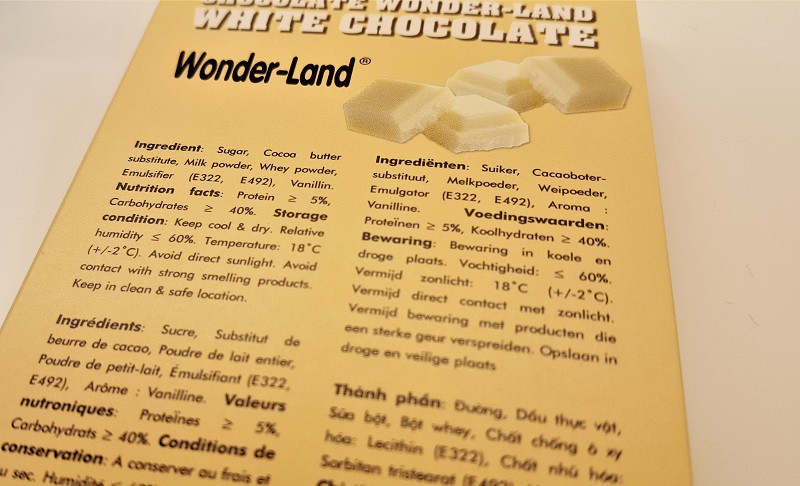
Now that there is cacao growing in the country, it's been a slow shift to educate people as to the difference between real and contrived. Many foods still presented as "chocolate" contain little to no cacao, are highly sweetened, and use milk powder or starches as filler & to prevent melting. Those local chocolates have been described to me as "chalk-like."
Other "chocolates" contain said chocolate as merely an ingredient or part of a whole (like in a Snickers or a Kit Kat, for example). Compound chocolate, which uses flavored oil in place of cocoa butter, is not uncommon. Bitter or dark chocolates are few and far between, though each Hanoi and Saigon have a chocolate shop retailing bars from various Vietnamese chocolate makers.
As in many Asian countries, Vietnamese people covet foreignness as a show of wealth and status. Imported products have always been more expensive, and assumed to be of higher quality. But in the case of local chocolate, this works both for and against them, as an imported concept brought to life locally.
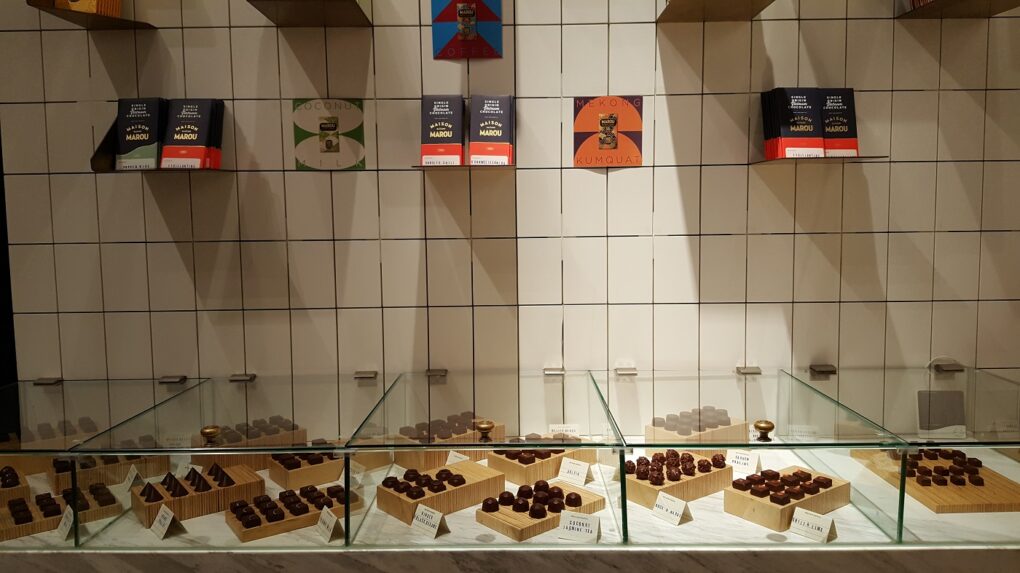
The Future of Vietnamese Chocolate
It's still unclear how Vietnamese chocolate & cacao will grow or stagnate over the next decade. While issues with sourcing quality cacao may be addressed with more farmer training, who's going to be doing all of those workshops? What happens if there's another huge drought and yields are low? How can you stop farmers from chopping down their own trees?
Vietnam is a country in flux, with expensive land prices only continuing to increase, and rapid changes in the popular industries & average incomes. Despite, or maybe because of that, the number of local visitors is on the rise at Marou. While I’m not sure what employees at any Vietnamese chocolate shops are paid, the average wage in the service industry in Vietnam is 15.000VND, or about 65 US cents per hour. Office workers often get paid more like 70.000 to 100.000VND per hour. So while most service industry workers would be hard-pressed to pay 100.000VND for a chocolate bar, for office workers in the city it’s definitely an affordable luxury.
The same goes for the pastries and chocolate drinks sold in the few craft chocolate shops across the country. But such shops are few and far between; there are still precious few places to buy bonbons or chocolate pastries or other creations. With the exception of the chocolate sold in makers' own cafes, much of the chocolate made in Vietnam is now exported. There simply aren't other local outlets for it. I saw some minibars from Marou sold in a convenience store, once. But for the most part, chocolate makers are still teaching chocolate consumers what they want. Maybe that's just one step in building a solid foundation, but only time will tell.













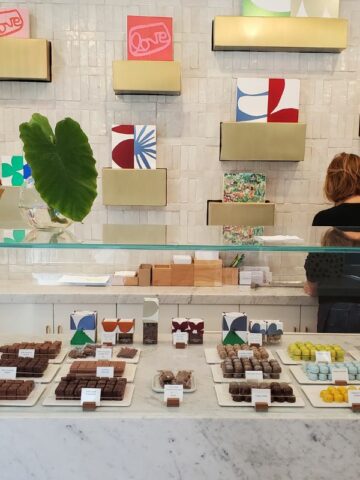


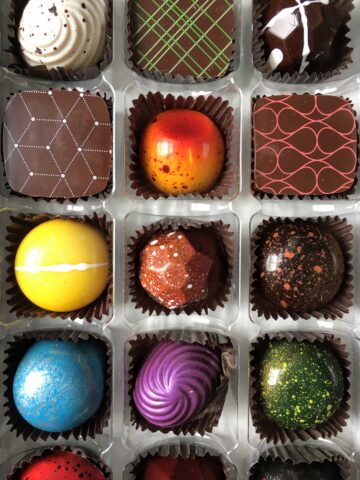
Zack
How does someone in the U.S. buy these chocolates, including the 100% cacao?
And are the beans checked for aflatoxins at key intervals? (Aflatoxins are abundant in warm, humid climates. They have been responsible for high incidence of liver cancer in some areas.)
Max
I'm gonna say no to the testing for aflatoxins, though I cannot say for sure. And you can't buy all of them in the US, but you can find many of them at barandcocoa.com
Masrul Djalal
How about cocoa fermentation system in Vietnam and hoa far the involvement of farmer organization
Max
The cocoa fermentation system in Vietnam is still very rudimentary in many parts, but just like the organization of farmers, it varies completely throughout the country. For the farmers who work directly with chocolate makers, they are fermenting on the farms, but I'm not sure what each farmer is using or how long they're fermenting, etc.
Caroline
@Max, perhaps you could check TBros. They have a very sophisticated fermentation method, they collect beans from many farms in different regions, including Dak Lak.
Max
Yeah, their bars are sold in several places throughout Vietnam! I met one of the co-founders at Chocoa in Amsterdam, but haven't had the chance yet to visit their factory.
lynn hudson
Is there still contamination from Agent Orange in the soil?
Max
Not that anyone has ever reported-- from what I've heard, the areas contaminated with Agent Orange had their water supplies hit the hardest in terms of how long the poison stayed, and those were cleaned decades ago. The lingering effects of Agent Orange remain in the genes of those affected, but have been removed from the water supply and soil.
Don Schuldes
I Am a chocolate addict.. This was very satisfying.. Thank you
Max
Glad to inspire! 🙂